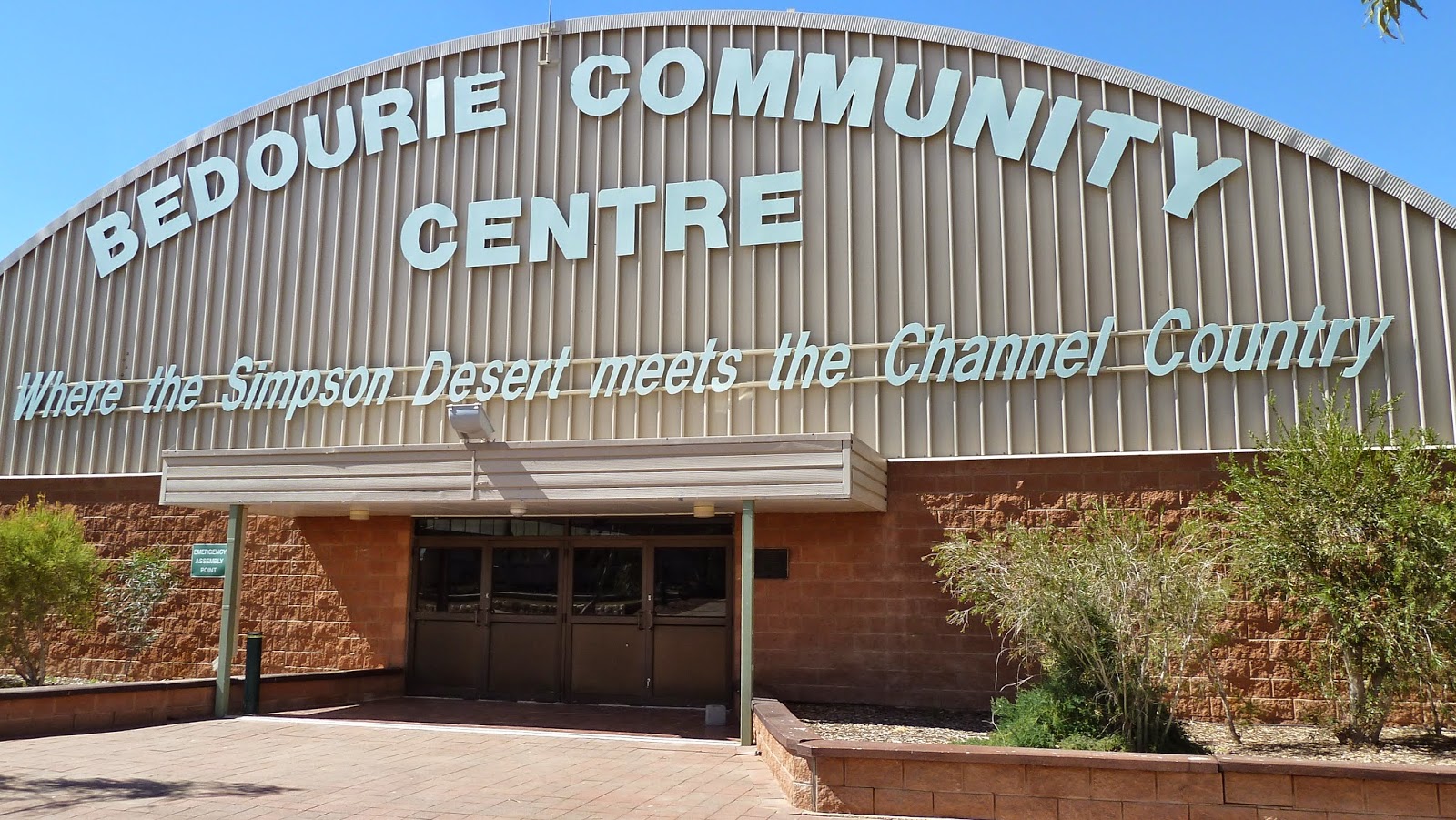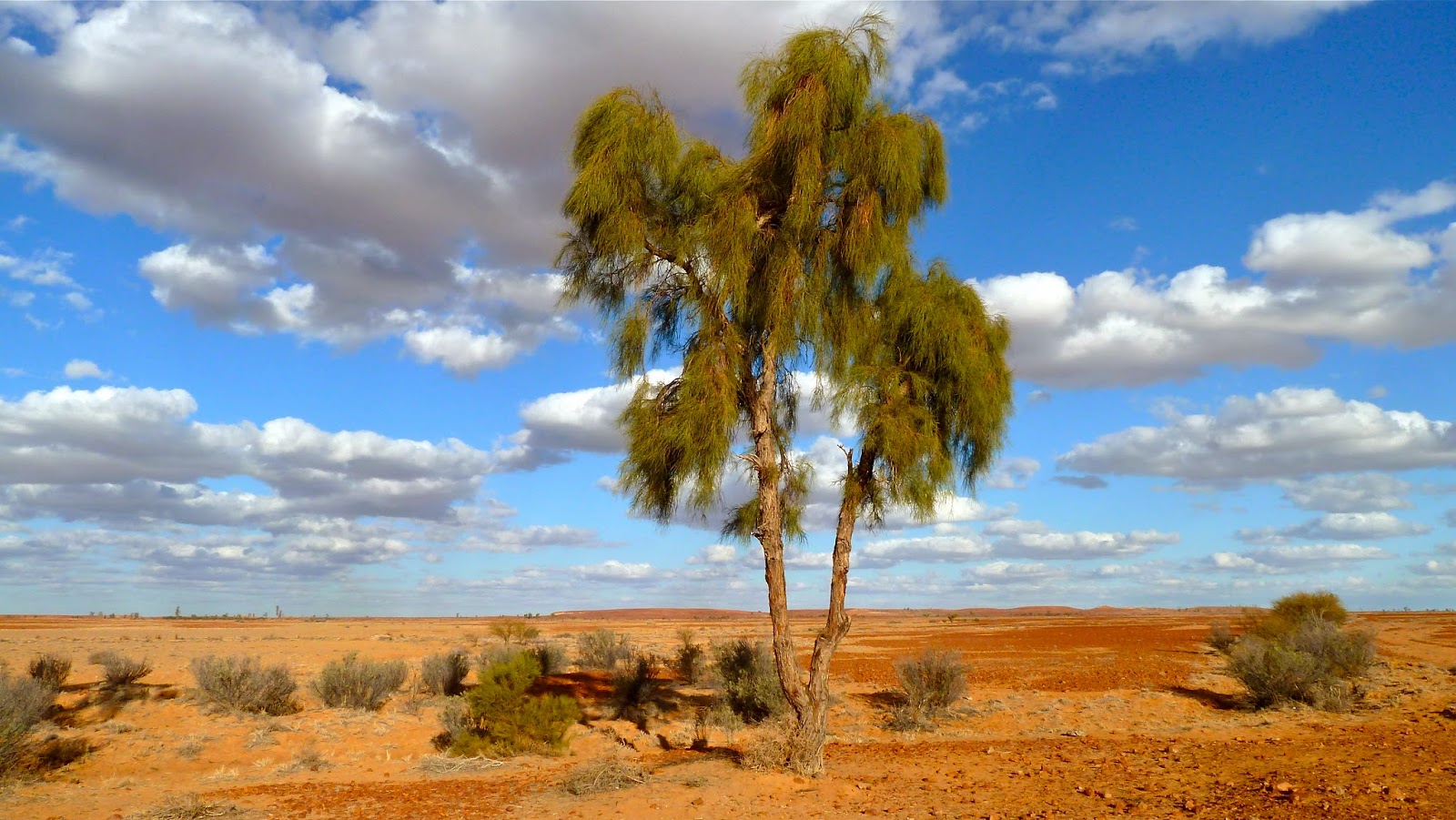We made an early start. Not by design, but because an inconsiderate couple had parked their huge f**k-off truck right outside our cabin rather than their own, and they left at 5 am, having walked around on gravel and closed car doors for a while before that. Another idiot a few minutes outside town gave us something to worry about. Although there was ample bitumen for the two of us to pass each other on the Diamantina Developmental Road, he insisted on driving on the gravel verge, without reducing speed, throwing up stones, one of which hit the windscreen with a loud – and literal – crack. Throughout the trip, we couldn't understand this exaggerated and completely unnecessary manoeuvring. On developmental roads – where there is often a single central strip of bitumen – we would pull over left to allow trucks or caravan-pullers to stay on the sealed bit. But no, they veered to their left, often destabilising those with trailers. Is it overdone politeness? Is it just what people do here? Why?
My friend had received a thunderstorm warning for the Channel Country on his weather app. We had a cloudless sky, however. And, almost immediately, a gathering of Brolgas. They were just the start of a bird display that included large flocks of Little Corellas, Budgerigars, Galahs and Cockatiels; six Australian Bustards; finches, swallows and Willy Wagtails (where in Australia don't you see Willy Wagtails?); crows and eagles. And that was all before breakfast.
We were entering Mitchell Grass country, first identified by explorer Thomas Mitchell in 1835 near Bourke in New South Wales. In fact, Queensland has the largest extent of these naturally treeless plains, considered to provide some of best natural pasture possible. The grass does well as long as grazing is properly managed; it regrows rapidly after rain, and is high in nutrients. Individual grass plants may live for up to 30 years, yet only produce seedlings once or twice. Cattle grazing and sheep and wool production have been key to the Outback economy since the first settlers pitched up in the state's west.
Trees are only to be found along creek lines where they offer welcome shade for stock in the hot summers. Out on the grasslands, the dark clay soils absorb water when it rains, but as they dry out they shrink and crack, making it difficult for trees to establish root systems. Small animals shelter within the cracks, however. Well-intentioned but unknowing landowners and government departments over the years introduced invasive weeds such as Prickly Acacia in the hope they would provide shade and fodder. Now pastoralists take measures to control their spread.
Roughly on the border of Boulia and Diamantina shires is the Vaughan Johnson Lookout. You may not know where that border is – it's just over halfway between Boulia and Bedourie – but look out for a picnic shelter standing alone and windswept on a slight rise to the left of the road. It's just beyond a narrow track off to the right and up to the Lookout. Although the Lookout is on the Marion Downs property, it is named after the Member for Gregory (when it was opened in 2012) in recognition of his contribution towards getting more roads sealed in western Queensland.
There was lots of information about the history of pastoralism and transportation in the west, and a loo with a view. The Mitchell Grass plains are vast and uncompromising: in the furthest distance you could just make out tree-lined Eyre Creek. It was the sort of vista you're compelled to keep snapping, even if you've already got many similar shots… just in case you never see anything quite like it again.
It got a lot sandier the nearer we got to Bedourie; and distant landforms once again became indistinct and mirage-like. We'd been told in Middleton that Bedourie is prettier than Birdsville. And it is. But our impression was coloured somewhat by the fact that the Royal Hotel, dating from 1880, was unable to serve us coffee; not that the surly serving girl cared. I concluded that the best thing about the place was its corrugated roof.
There were a number of points of interest from then on en route to Birdsville. Bedourie is on Eyre Creek, but there it was pretty dry – I still can't stop comparing dry channels – in contrast to the crossing at Glengyle. I couldn't quite conceive of a station as big as the sign described. Its permanent waterholes and flood plain pastures made it an attractive property for Sidney Kidman to acquire in 1903.
Cuttaburra Crossing, another permanent waterhole, is a little further south. We pulled into a lay-by just beforehand, thinking we were there, and were a little disappointed to find only a shy pelican and the ubiquitous White-necked Heron. (Only now have I spotted the cow in the picture.) After lunch, we continued down the road and soon came upon the actual crossing, busy with birds such as ducks, pellies, both Royal and Yellow-billed Spoonbills, herons, eagles and a Nankeen Kestrel.
Cuttaburra lies between Lake Koolivoo and Lake Machattie. You can make a 60-km detour around the latter, from King Creek Crossing. When Machattie contains lots of water, it's claimed to be the largest pellie breeding area in Australia, but I have heard that said about other watery locations, namely one of the lakes in Currawinya National Park, north of Hungerford on the Queensland/New South Wales border. We decided against the detour, partly because we'd seen lots of birds at Cuttaburra; we weren't sure there was any water in the lake; and one description of the route mentioned lake 'glimpses'.
The Eyre Development Road (from Bedourie to Birdsville) became increasingly tiresome, with it's alternating sealed and highly corrugated sections. I later read about Royal Mail Service No 276, from Boulia to Bedourie, and it struck a chord.
Eddie Miller, overseer of Royal Mail Service No 276, had a pretty easy job on paper. All he had to do was load his truck with mail, provisions and passengers in Boulia on Thursday, drive 247 km south to Glengyle Station, stopping overnight at Bedourie, and return to Boulia on Saturday arvo, a trip of 494 km and three days in which to do it. But you don't get the real picture until you learn that the roads in Eddie's day were pretty crook, and that was in an extremely good season. Eddie used to tell the story of another old Channel Country mailman and his passenger driving through a blinding dust storm at night, and the passenger asking how the hell the mailman knew where the road was. 'When I get on to some smooth going I know I'm off the road for sure,' was his reply.
There was another treat in store before we reached Queensland's most iconic Outback town. About 12 kilometres north of it is a stand of uncommon Waddi trees. They are tall (3-4 metres) and as such look rather out of place compared with most vegetation in these arid lands. Most are between 500 and 1000 years old; they are very slow growing. They resemble Casuarinas, but more raggedy.
You don't need to know the address of the Birdsville Hotel: you can't really miss it; and you'll almost certainly have seen a photograph of it somewhere before. You could almost be forgiven for thinking the town itself (top of page) looks a bit sparse and bleak, if it wasn't for the excitement of having finally got there.
Seated outside was a cowboy who looked as though he'd nodded off in the late afternoon sun. But in fact he was checking his phone. Of course he was. There was mobile reception and wifi here, as there had been in every town we'd stayed in so far on the trip. Every evening I was able to post photos hot off the camera; all that day's action on Facebook within hours, if I wanted.
I hoped all my illusions of remoteness weren't going to be wrecked by the reality of comms in the furthest-flung Outback towns.
I hoped all my illusions of remoteness weren't going to be wrecked by the reality of comms in the furthest-flung Outback towns.
This post was last edited on 19 September 2014








































No comments:
Post a Comment